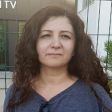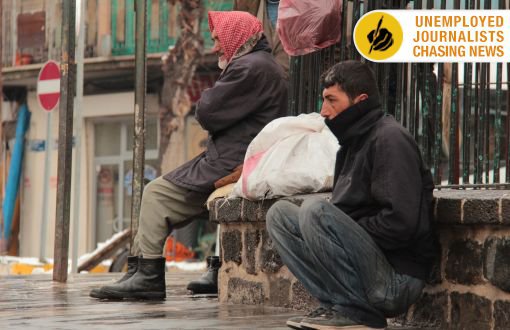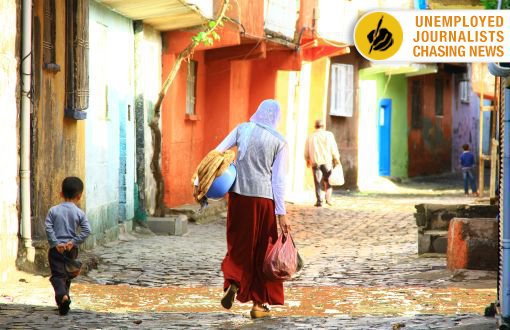Click to read the article in Turkish / Kurdish
It was decided to establish a “food bank” under the umbrella of Sarmaşık Association: Combating Poverty and Sustainable Development. Yet, in order to provide monthly aid to approximately 30,000 people, the number of which would later increase,, the association needed a solidarity network.
A wide array of support in the foundation phase was effective in the establishment of the food bank. A protocol was signed with 34 organizations under Diyarbakır Democracy Platform, including Diyarbakır Metropolitan Municipality, Diyarbakır Chamber of Commerce and Industry, Sur Municipality, Kayapınar Municipality, Diyarbakır Chamber of Medicine, Diyarbakır Bar Association and Diyarbakir Industrialist and Business People Association. This list included trade unions from various lines of work, families of arrestees and immigration associations.
The aim of the protocol was to support the food bank periodically each month, even with only miniscule figures. Unions and chambers would encourage their members, while other organizations would encourage their sponsors in this regard.
Number of donors rapidly increased
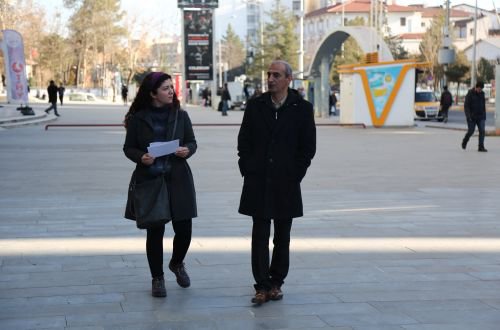
The food bank came into service on May 15, 2007. In the first stage, 3,600 families were supported. The number increased to 5,400 in a short while. This meant that the number of people provided with aid reached to 32,000.
According to Şerif Camcı, Chairman of the Board of Directors of Sarmaşık Association, the profile of those contributing to the association changed in time. After a while, the number of individual donors were more than the number of organizations in the protocol. The average number of donors reached up to 9,000.
Among these were a janitor who donated 20 TL a month as well as a business donating a certain share of its income. Yet as of 2014 the number of donors dropped to 5,800 due to “increasing pressures and the change in solidarity priorities”.
A new and huge mass of victims appeared following the rush of those from the war in Syria and from the conflicts in the cities of Turkey. People who were supporting Sarmaşık Association for years channeled their aid to these “new victims”. However, this decline in the number of donors did not hinder the aids to the food bank.
The association received 2,400,000 TL in donations annually. 86% of the donations were distributed to aid recipients.
People who came to the food bank were able to receive 15 kinds of staple foods as well as diapers each month according to their need.
Village guards and AKP supporters also received aid from Sarmaşık Association
At Sarmaşık Association, the intended population and aid criteria were rather anomalous. The elderly poor, who did not have social security, were outside of production mechanisms and were unable to go back into production; handicapped citizens; divorcees and widows; patients under continuous treatment; families/individuals under hard socioeconomic conditions; and families with no member that could join workforce could receive aid.
“We weren’t interested in the political views of the applicants. We weren’t asking to which party they were voting for,” says Şerif Camcı. Village guards, AKP supporters and HDP supporters: they all had received aid from the bank for years.
Projects aimed at children and women
After the poverty map and the food bank, new necessities were determined in time. New projects were on agenda:
Child Education Support Program
The project aimed to improve the conditions for children of school age, who were able or unable to go to school as well as child laborers. 120 children benefitted from the project.
Women’s Health (Pilot) Project
The project aimed to inform women regarding basic hygiene that would improve their living space and teenage women regarding basic health protection; to develop health-protecting behaviors, to encourage the use of medical services; and to provide cleaning agents to families.
The project was implemented for one year. 105 women who received aid from the food bank benefitted from the project.
Natural Gas Technologies Employment Project
The project was created to generate employment in line with sustainable development principles. It was aimed at two groups. The first group was comprised of those with occupational backgrounds who did not have certificates.
The second group was comprised of the individuals between 18 and 35 years old whose families had applied to the food bank. 300 hours of training was provided within the scope of the project.
The “Sarmaşık Model” drew attention
In time, the studies of the association drew attention both in Turkey and on an international scale. The Sarmaşık Model was listened to attentively in various national and international meetings.
International Symposium on Poverty, held in 2010 in Istanbul, 4th Regional Development and Governance Symposium, held in 2009 in Ankara, Turkish Economic and Social Studies Foundation (TESEV) 2008 Conference, Third Sector Foundation of Turkey (TÜSEV) Conference and Human Rights Agenda Istanbul Conference were some of those meetings.
While the association was seen as an “exemplary solidarity model”, it was also subjected to audits and investigations.
The first audit was held by Interior Ministry auditors between June 11-24, 2009. The documents of the association were examined for 14 days.
The objective was to “determine whether the association was operating in line with the purpose written in its charter”. When the auditors finalized the examination and prepared the report, there was no statement regarding non-compliances with the charter.
The association that helped the earthquake victims became the target
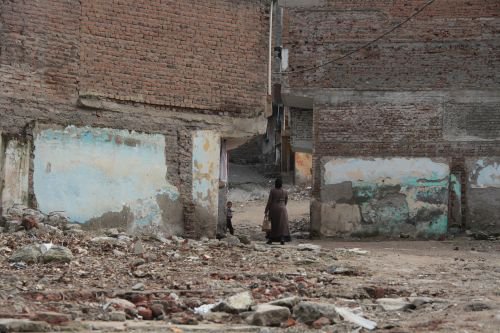
Following the earthquake in Van in October 2011, Sarmaşık Association became the target of racist groups on social media. Tweets written with the tag #sarmasikderneginebagisyok (no donations to Sarmaşık Association) became the number 1 trending topic.
The association had already gone through an extensive audit. Yet after the agenda created on social media, the Diyabakır Governorate blocked the bank accounts of the association for two months.
The justification for this was that the aid delivered to the earthquake victims was not “a study in compliance with association’s purpose”. The block was removed after the association’s objection. However, for this reason, the association was made to pay administrative fines three times.
In 2012, a lawsuit was brought against Sarmaşık Association within the scope of the “KCK (Kurdistan Communities Union) Main Case”. Association executives’ testimonies were taken yet the case was dismissed of charges.
Simultaneously, State Audit Court auditors and Interior Ministry civil inspectors started an investigation into the accounts of Diyarbakır Metropolitan Municipality.
The report prepared at the end of the investigation stated that between 2008 and 2009, the municipality donated to Sarmaşık Association in an illegal manner.
Civil inspectors ignored the protocol between the municipality and the association. The aid, which amounted to 900,000 liras, was charged to Diyarbakır Metropolitan Municipality Mayor Osman Baydemir, aldermen and municipality officials who have signature under the payment transaction.
Moreover, the Interior Ministry allowed an investigation into Baydemir and the aldermen. Although the municipality objected the case results via State Council, Department No. 1 of the State Council found the case result to be sound and sent it to the Diyarbakır Chief Public Prosecutor's Office.
The municipality was forced to demand 900,000 liras back from Sarmaşık Association. After the case result, association declared to the public that it will pay the money in six installments and called for aid.
In fact, municipalities have budgets specifically allocated for this sort of social aid. However, due to the investigation, the municipality had to ask for the financial aid back that it had provided to Sarmaşık Association. Later on, the municipality determined the material needs of the poor and purchased these necessities itself. It cooperated with Sarmaşık Association in the distribution of these necessities and prioritized the families determined by the association. The municipality kept on providing aid to the poor until a trustee was appointed. After that, the study was stopped.
An investigation was held into the volunteers of the association as well. Evrim Alataş, a journalist who died in 2010, was summoned for a statement in 2012. One of the volunteers of the association, sociologist Müge Tuzcuoğlu, was among those taken into custody for a short while.
No reports against the association were written in these investigations and examinations. A civil inspector even said, “If this work was held elsewhere in Turkey, it would be rewarded.”(NK-ST/NU/HK)
* Photos: Sertaç Kayar
***
UNEMPLOYED JOURNALISTS CHASING NEWS
1- Even Though They Speak Through Their New “Occupations,” They Are Journalists
2- Journalism is Banned under theState of Emergency
3- Germany: New Generation Diaspora/Kopuntu
4- Germany: Immigration of the Suffocated
5- The Organization that Made "The Arab Girl Looks from the Window"
6- How They Work/Cannot Work, Breaking Down the Stereotypes
7- They Marry White People to Avoid Discrimination
8- Private Rehabilitation Centers and Problems: The Example of Bingöl
9- Two Directors Discuss the “Educational Support for People with Disabilities” Practices
10- Students and Parents from Bingöl Tell of Their Experiences
11- 'Solution is Inclusion System in Education for People with Disabilities'
12- The Neighborhood of "Giaour" Doesn't Exist Anymore
13- Mıgırdıç Margosyan Couldn't Recognize His Street Amidst Ruins
14- The Ones Who Choose Life, Love, and to Struggle, Just to Spite Hatred
15- Şahika: You Don’t Become A Trans Woman Later
16- Emirhan: It's Necessary to Have An Organized Struggle and to Record Our Experiences
17- Sarmaşık Association Was Closed; Where Does This Leave the Victims?
18- An Alternative Bank: The Sarmaşık Food Bank
* The "Unemployed Journalists Chasing News" project is being realized with the financial support of Matra-Human Rights Program of Consulate General of the Kingdom of the Netherlands.




